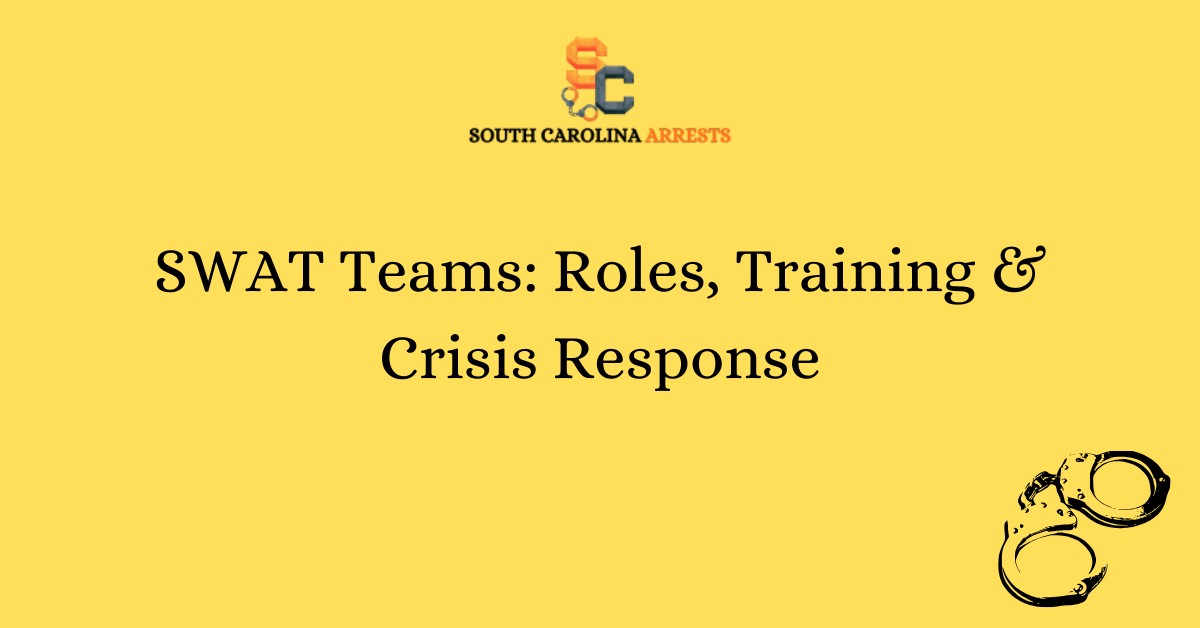SWAT Teams: Roles, Training & Crisis Response
SWAT teams play a crucial role in law enforcement, specializing in high-risk situations that require swift and strategic action. These elite units are trained to handle various crises, from hostage rescues to armed standoffs, with precision and efficiency.
With rigorous training and specialized equipment, SWAT members are prepared to respond to the most dangerous scenarios, ensuring the safety of civilians and officers alike. Their expertise in crisis management and tactical operations makes them a vital asset in maintaining public safety and security.
Roles of SWAT Teams
SWAT teams, or Special Weapons and Tactics teams, play a crucial role in handling high-risk situations that regular law enforcement may not be equipped to handle. Their primary function is to respond to incidents that involve significant threats to public safety or require specialized skills.
Specialization in high-risk situations
SWAT teams are specially trained to handle a variety of high-risk situations, including hostage rescues, armed standoffs, and counter-terrorism operations. They are equipped with the necessary tools and training to navigate these dangerous scenarios with precision and efficiency.
Handling crises like hostage rescues and armed standoffs
One of the key roles of SWAT teams is to manage crises such as hostage situations and armed standoffs. Their specialized training allows them to approach these incidents with a strategic mindset, ensuring the safety of both civilians and law enforcement officers involved.
Training of SWAT Members
SWAT team members undergo rigorous training programs to prepare them for the demanding situations they may encounter in the field. These programs focus on physical fitness, marksmanship, tactical maneuvers, and crisis management skills.
Rigorous training programs and exercises
SWAT members participate in intense training exercises that simulate real-life scenarios they may face on the job. These exercises help them develop the necessary skills and instincts to respond effectively in high-pressure situations.
Utilization of specialized equipment
In addition to their training, SWAT teams utilize specialized equipment such as armored vehicles, firearms, and tactical gear to enhance their capabilities in crisis situations. This equipment is essential for carrying out their duties safely and efficiently.
Crisis Response by SWAT Teams
When faced with a crisis, SWAT teams are trained to act swiftly and decisively to neutralize threats and protect innocent lives. Their expertise in crisis management and tactical operations allows them to respond to emergencies with precision and professionalism.
Swift and strategic action in dangerous scenarios
SWAT teams are known for their ability to take quick and decisive action in dangerous scenarios, minimizing the risk to civilians and law enforcement personnel. Their strategic approach to crisis response ensures that they can resolve situations effectively and efficiently.
Expertise in crisis management and tactical operations
SWAT teams are highly skilled in crisis management and tactical operations, allowing them to adapt to evolving situations and make split-second decisions when necessary. Their expertise in these areas is essential for maintaining public safety and resolving crises effectively.
Frequently Asked Questions
Our Frequently Asked Questions section is designed to provide you with detailed information on SWAT Teams: Roles, Training & Crisis Response. Below, you will find comprehensive answers to common queries related to this topic.
What is the role of a SWAT team?
A SWAT team, which stands for Special Weapons and Tactics, is a specialized law enforcement unit that is trained to handle high-risk situations such as hostage rescues, counter-terrorism operations, and armed confrontations. Their primary role is to ensure the safety of civilians and law enforcement officers in these critical incidents.
How are SWAT teams trained?
SWAT team members undergo rigorous and specialized training to prepare them for the demands of their role. Training typically includes marksmanship, tactical maneuvers, crisis negotiation, and physical fitness. Additionally, team members often participate in regular drills and simulations to ensure they are prepared for any situation.
What equipment do SWAT teams use?
SWAT teams are equipped with a variety of specialized gear to assist them in their operations. This may include weapons such as rifles and handguns, tactical gear such as body armor and helmets, as well as less-lethal weapons like tasers and pepper spray. They also have access to tools for breaching doors and vehicles, as well as communication devices to stay in contact with team members.
How do SWAT teams respond to crisis situations?
When a crisis situation arises, SWAT teams are deployed to the scene to assess the situation and take appropriate action. This may involve establishing a perimeter, conducting negotiations with suspects, or executing a tactical assault to resolve the crisis. Their goal is always to protect lives and bring a peaceful resolution to the situation.
What are the requirements to join a SWAT team?
Joining a SWAT team typically requires law enforcement officers to have several years of experience in the field, as well as specialized training and certifications. Applicants must pass rigorous physical fitness tests, marksmanship evaluations, and psychological assessments to ensure they are fit for the demands of the role. Additionally, candidates must demonstrate strong decision-making skills and the ability to work effectively in high-stress situations.
How do SWAT teams coordinate with other law enforcement agencies?
SWAT teams often work in collaboration with other law enforcement agencies, including local police departments, federal agencies, and tactical units. They may participate in joint operations, share intelligence and resources, and provide specialized support when needed. This coordination ensures a cohesive and effective response to critical incidents that require the expertise of a SWAT team.







